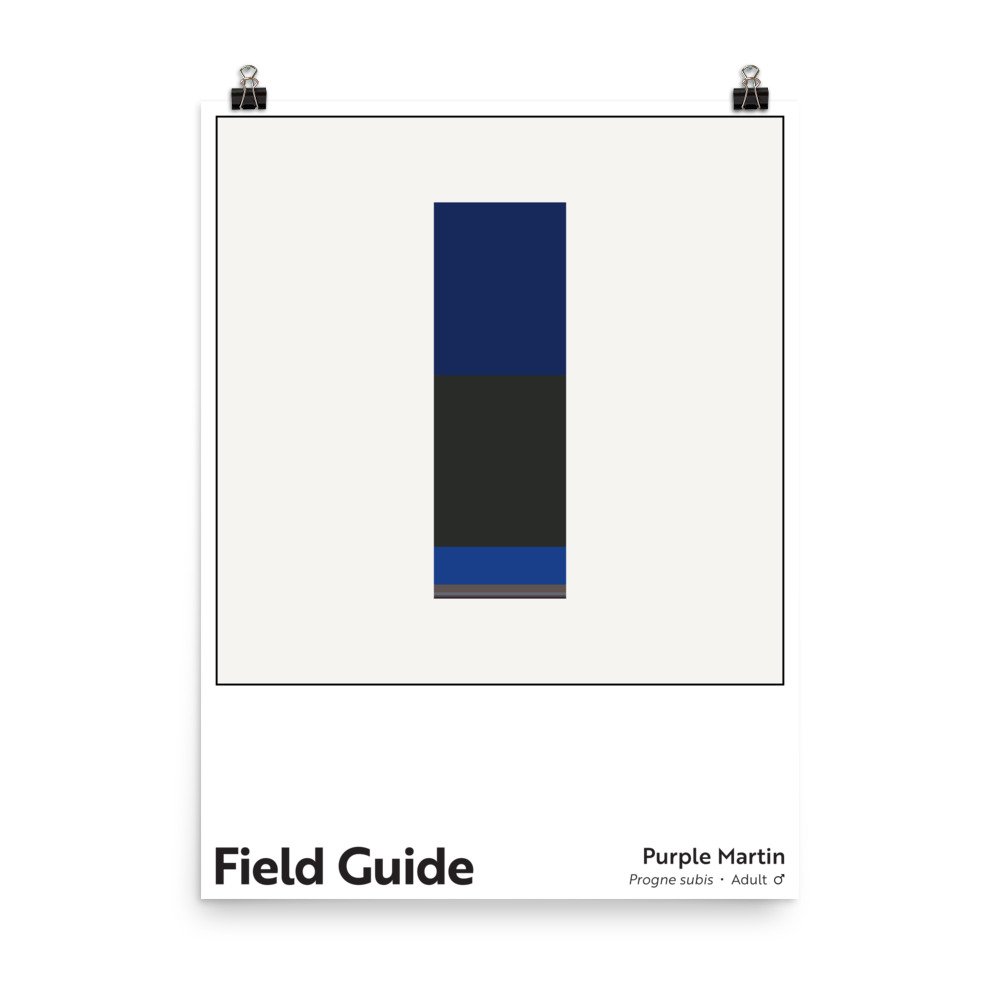Field Guide : Purple Martin (Male)
Field Guide : Purple Martin (Male)
Unlimited edition. 18 x 24 inch, museum-quality poster on matte paper.
It’s hard to believe, but across most of North America purple martins depend upon manmade containers – communal bird houses, hanging gourds, etc. – for their nesting opportunities. (Martin populations in the American West are an exception, as they continue to make use of abandoned woodpecker holes and other, naturally-occurring tree cavities.) How did most of these big-mouthed, cobalt and indigo swallows become dependent on our artificial nesting structures? The loss of older trees in the eastern United States – removed by European settlers, for the most part – coupled with intense competition from introduced species like the adaptable and aggressive European starling, made martins increasingly dependent on the gourds that Native Americans and settlers provided for them. Over time, most members of the species have become 100 percent reliant on humans providing housing for them to reproduce.
Why did native populations and settlers provide nesting containers for martins? Researchers believe martin colonies were valued for their color, cheerful vocalizations, aerial elegance, and voracious appetites; in fact, martins’ diets remained a big selling point centuries later, even if some of the “advertising” was misleading.
From my father’s 1994 book on land stewardship, Heron Hill Chronicle: “I relocated my purple martin houses after learning what these birds eat. Martin aficionados (and the manufacturers of martin houses) advertise that martins eat their weight in mosquitoes every day. That claim has never made much sense to me since diurnal martins spend much of their flying time high in the air, while crepuscular mosquitoes hunt close to the ground for warm-blooded prey. Only recently, however, have researchers found that fully one-third of the martins' summer diet – and in some areas nearly 100 percent – is composed of such bona fide mosquito-eaters as damselflies and dragonflies. Another large percentage of the birds' diet includes beneficial honeybees. I enjoy the cheerful chatter of martins and decided to move their nesting condos somewhere that would be beneficial to both of us. The bend of the dike across the road and next to the marsh is ideal. Since biting greenhead flies are ferocious inhabitants of every healthy tidal marsh, and since 16 percent of the martins' diet elsewhere is composed of flies, I like to think that the local nesting martins diet now approaches 100 percent greenheads. Meanwhile, the martin houses are now well away from the home pond where the mosquito-eating dragonflies and damselflies are active.”
Note: These archival poster prints feature rich, appealing colors. I encourage customers to take care in handling them until they are framed/protected for display; the darker colors on the matte paper can be scratched. They ship rolled, so customers need to flatten them before framing (or have their framer do so).
Charitable Sales Model: Whenever one of these poster prints is purchased, a charitable contribution equal to 10% of the print’s cost (or $3.60) is made to a nonprofit working to tackle environmental or social challenges. Read more about my charitable sales model here.

